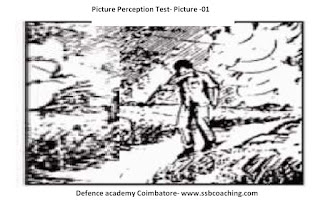We train you to become a leader- www.ssbcoaching.com
ssb coaching
14 days SSB/ FSB Interview coaching offered
call
094437 20076
www.ssbcoaching.com
Three experts to guide
come over to ensure success
 Are independent
Are independent
 Can tolerate ambiguity such as an unclear task
Can tolerate ambiguity such as an unclear task
 Are competent to perform the task at hand
Are competent to perform the task at hand
 Identify with the goal of the unit and the organisation
Identify with the goal of the unit and the organisation
 Expect to share in the decision making process
Expect to share in the decision making process
14 days SSB/ FSB Interview coaching offered
call
094437 20076
www.ssbcoaching.com
Three experts to guide
come over to ensure success
A starting point in understanding your style is asking people who have seen you in any type of leadership role to describe
how you act as a leader. Tell them you are thick skinned and not looking for compliments. If asking open-ended questions
does not furnish you the information you can try the following probes:
how you act as a leader. Tell them you are thick skinned and not looking for compliments. If asking open-ended questions
does not furnish you the information you can try the following probes:
- In your opinion, do I put more emphasis on the relationships with people, or do I focus more on the task at hand?
- Do I come across as a taskmaster?
- Do I come across as too easy-going with people?
- How much direction do I provide?
- How responsive am I to the needs of the group members?
- As a leader, am I a pussycat?
- Does my leadership inspire you, or anybody else?
- As a leader, do I come across as a hard-core bureaucrat?
- How warm and supportive am I as a leader?
The following table illustrates the type of feedback on leadership practices a person might gather from the 360-degree technique. Using this technique feedback is derived from a full sampling of parties who interact with the leader. Feedback is thus derived from a full circle (360 degrees) of observers. As you can see the leader in question thinks more highly of his effectiveness than does the group.
| Behavior or Attitude | Self-Rating | Average/ Group rating | Gap |
| Gives right amount of structure | 9 | 7.5 | -1.5 |
| Considerate of people | 10 | 6.2 | -3.8 |
| Sets direction | 9 | 3.9 | -5.1 |
| Sets high standards | 7 | 9.0 | 2+.0 |
| Gives frequent feedback | 10 | 6.3 | -3.7 |
| Gets people pulling together | 9 | 5.1 | -3.9 |
| Inspires people | 10 | 2.8 | -7.2 |
| Gives emotional support | 8 | 3.7 | -4.3 |
| Is a helpful coach | 10 | 4.5 | -5.5 |
| Encourages people to be self-reliant | 6 | 9.4 | +3.4 |
To decide how much authority to retain for yourself, we have to examine the situations given below. Generally speaking, group members can be granted more decision making latitude if they
All of us can develop the skills required to become a leader. The first step is to sort oneself out by adopting an array of self-oriented mechanisms to improve self-performance. The second step of the model is "to walk the talk", to demonstrate the tight link between rhetoric and deed to others. Thirdly, one needs to involve others in the process, including them in your goal-setting and encouraging them in their own goals. Finally it is important to develop systems that encourage learning. Teamwork and a self leading culture need to be promoted if the system is to become self-sustaining. The whole message is summarized in a poem by Lao-Tzu.
"A leader is best when people barely know he exists
Not so good when people obey and acclaim him
Worse when they despise him
But of a good leader, who talks little,
When his work is done, his aim fulfilled,
They will say:
We did it ourselves."
"A leader is best when people barely know he exists
Not so good when people obey and acclaim him
Worse when they despise him
But of a good leader, who talks little,
When his work is done, his aim fulfilled,
They will say:
We did it ourselves."


Comments
Post a Comment